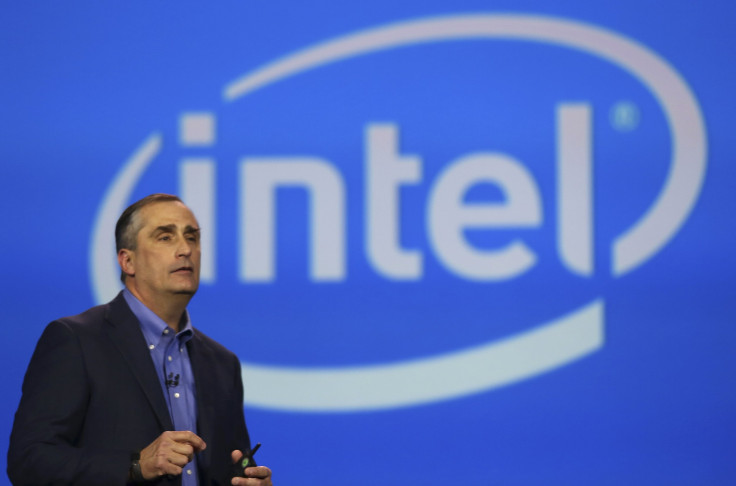Intel Corporation First-Quarter Earnings: Revenues Hit $12.8 Billion As Profits Meet Expectations

Struggling chipmaker Intel (NASD:INTC), which has seen its lock on chips that power personal computing devices erode as consumers and businesses shift from PCs to smartphones and tablets for information, on Tuesday reported first-quarter results that slightly missed analysts’ expectations for sales. For the period ended March 31, the Santa Clara, California, company reported earnings per share of 41 cents, up 8 percent from the year-earlier period. Revenues came in flat at $12.8 billion. Net income came in at $2 billion.
Analysts surveyed by Thomson Reuters had estimated that Intel would post earnings per share of 41 cents on revenue of $12.9 billion. Intel shares were up 1.62 percent in early after-hours trading Tuesday.
The numbers were not unexpected. Intel last month warned investors that revenues for the quarter would miss previous guidance by about $1 billion. “The first quarter revenue came in consistent with the revised Outlook we released on March 12,” Intel said, in a statement.
The company is facing headwinds on a number of fronts. It still commands the lion’s share of the market for chips that power PCs, a segment that accounts for more than half of its revenues. But that market is in decline. Researchers at Gartner last week said PC shipments were down 5.2 percent in the first quarter, compared with a year ago. Gartner noted that last year’s numbers got a boost when many businesses and consumers purchased new Windows 8 PCs after Microsoft ended support for the Windows XP operating system.
Intel’s Client Computing group saw revenues fall 8 percent year over year in the period to $7.4 billion.
Meanwhile, most of Intel’s efforts to become a major player in chips that run mobile devices have fallen flat. The company lost first-mover advantage to the U.K.'s ARM Holdings, whose mobile chip design has been adopted by the vast majority of smartphone component manufacturers, including Qualcomm, whose Snapdragon chip powers high-end smartphones like the new HTC One M9.
Intel’s mobile chip unit lost about $4.2 billion in 2014. Comparing those results with this year’s tallies will be difficult for Wall Street analysts, as the company this month announced a new financial reporting structure in which PC and mobile chips are combined. The move could help conceal ongoing weakness in the mobile business.
Intel is hoping a new line of chips named Atom x7 will help reverse its fortunes. One of the first products to sport the new silicon is Microsoft’s Surface 3 tablet, which it’s pitching at buyers in both the commercial and consumer markets. The 14-nanometer x7 helps Surface 3, which starts at $499 and is now available for preorder, achieve battery life of up to 10 hours of heavy use. The x7 could prove popular with other hardware makers, including Dell and Hewlett-Packard. Intel “claims to be in a very different place today than it was a year ago,” said analysts at Trefis research.
Surface 3 runs the full version of Windows 8. Previous Windows tablets based on ARM ran an unpopular variant called Windows RT, which ran only apps available from Microsoft.
Intel’s enterprise business remains strong, though it accounts for significantly less revenue than the PC business. Sales were up 19 percent to $3.7 billion.
Intel continues to dominate the market for chips that power servers used both in corporate data centers and by cloud providers who offer computing power and software as a service. The company may be looking to further its dominance in the data center through acquisitions. It’s reportedly in talks to acquire Altera, which makes programmable chips for enterprise systems and also for devices that power the so-called Internet of Things.
© Copyright IBTimes 2024. All rights reserved.






















